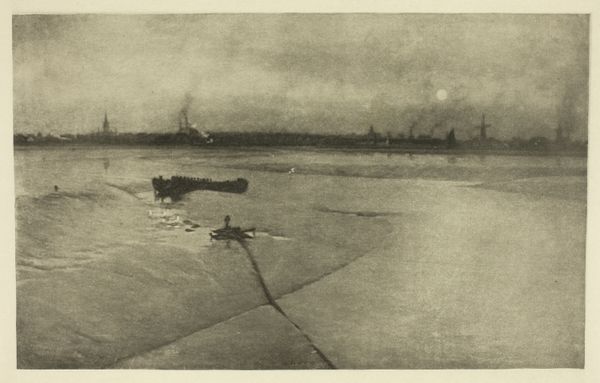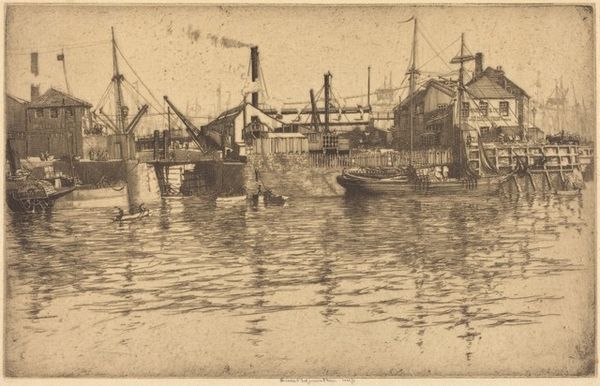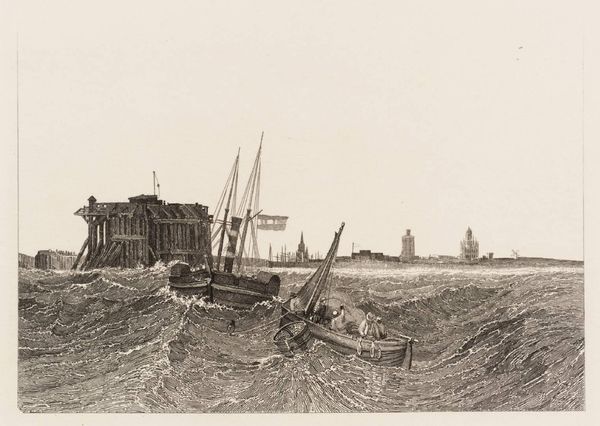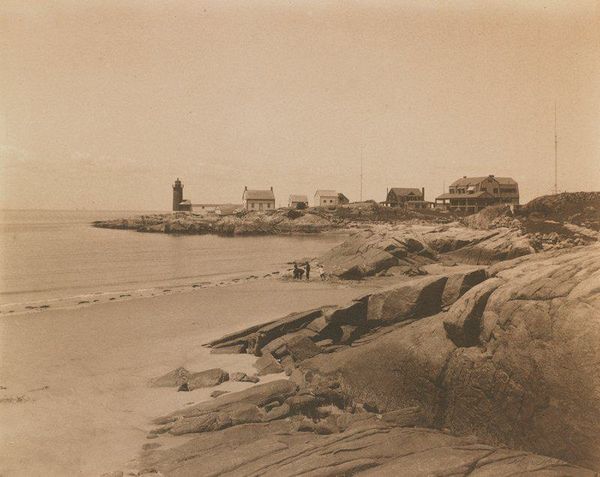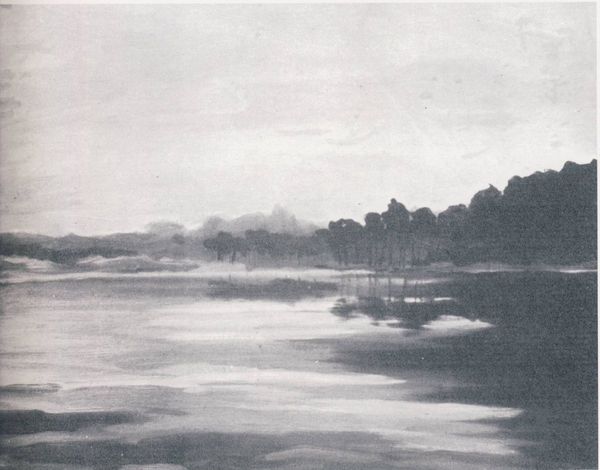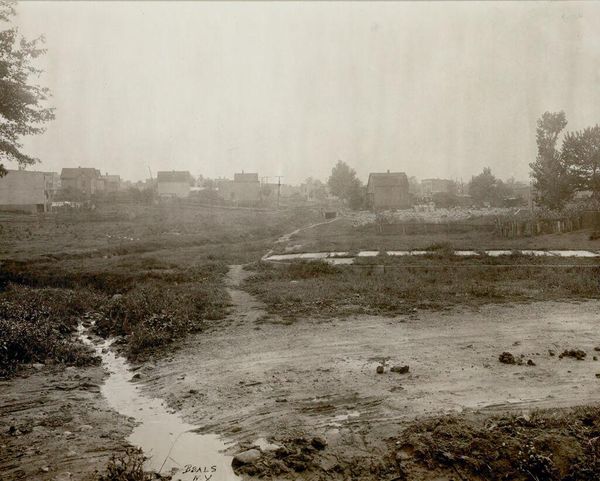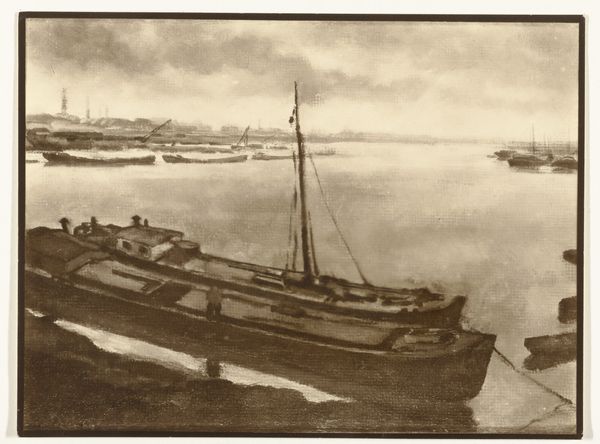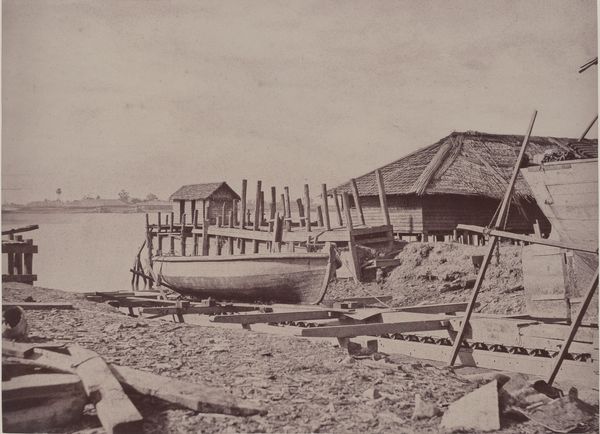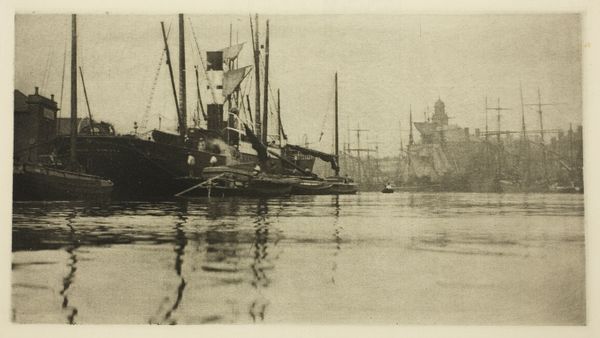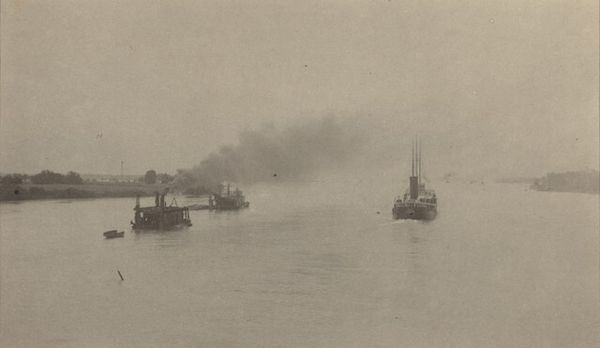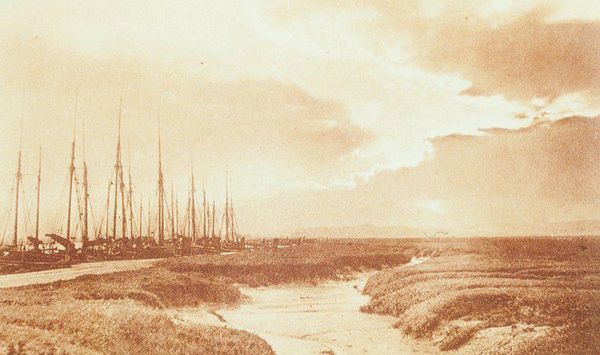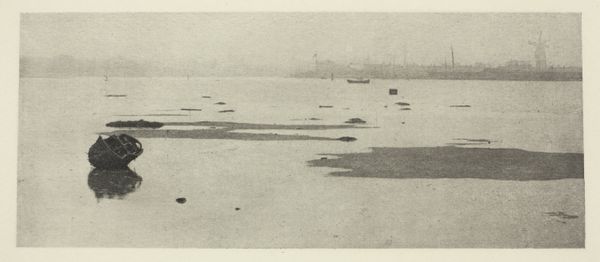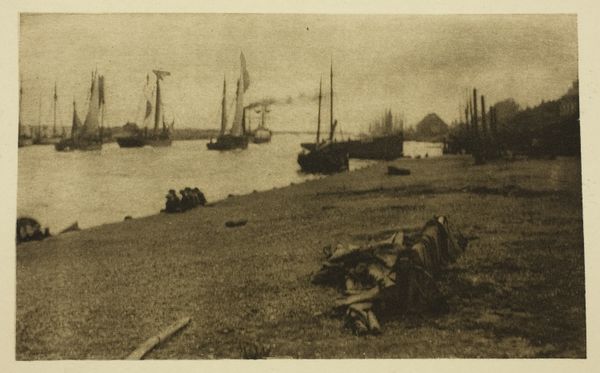
Dimensions: 2 7/8 x 6 9/16 in. (7.3 x 16.67 cm) (image)
Copyright: No Copyright - United States
Curator: George Davison's "Wyvenhoe on the Colne in Essex," a gelatin-silver print from circa the 20th century, captures an English cityscape with intriguing depth. Editor: It's misty, almost ghostly. All muted tones, blending into each other. It gives me a melancholy feeling, like a faded memory. Curator: Indeed, the hazy quality aligns with pictorialism, where photography aimed for artistic effect rather than mere representation. The social and economic context of late 19th, early 20th-century industrialization and urbanization in England shaped aesthetic movements like pictorialism. We can read it as an escape, an attempt to beautify the often harsh realities of industrial landscapes. Editor: It's like someone smudged the edges of reality, softening the blow of progress. I like how the horizon is heavy and dark, whilst the land looks quite soft and bright - creates this beautiful feeling of uncertainty to it. Makes you want to sink your toes into the sandy earth and reach into that horizon and maybe just disappear. Curator: I see what you mean. Davison's emphasis on atmosphere can be read through lenses of class and power, reflecting perhaps the bourgeois anxieties and nostalgia prevalent during rapid social change. Pictorialism served as an attempt to create aesthetic value in industrializing space - imbuing landscapes with personal affect in a time of ever increasing objectification. Editor: Nostalgia is a big feeling when looking at it; as if these moments we often disregard are now worthy to look back to, even romanticizing them, when the feeling may be completely contrary when witnessing in real time. It's almost a dare from the author of, "Are you sure you appreciated that? Did you cherish it?". Curator: And it also suggests the power dynamics between human experience and nature’s representation in photography, reminding us to question whose perspectives are being foregrounded. Editor: A good food for thought before snapping the next cityscape photo, then. It feels like the artist attempted to show, using monochrome hues, what can only be truly felt in color. Curator: Exactly! This piece underscores the value of continually critiquing and historicizing not only what we see, but also how we come to see it. Editor: Well, Davison definitely stirred something in me today. Made me want to chase sunsets, capture moody weather, and remember that even dust has its story.
Comments
No comments
Be the first to comment and join the conversation on the ultimate creative platform.
